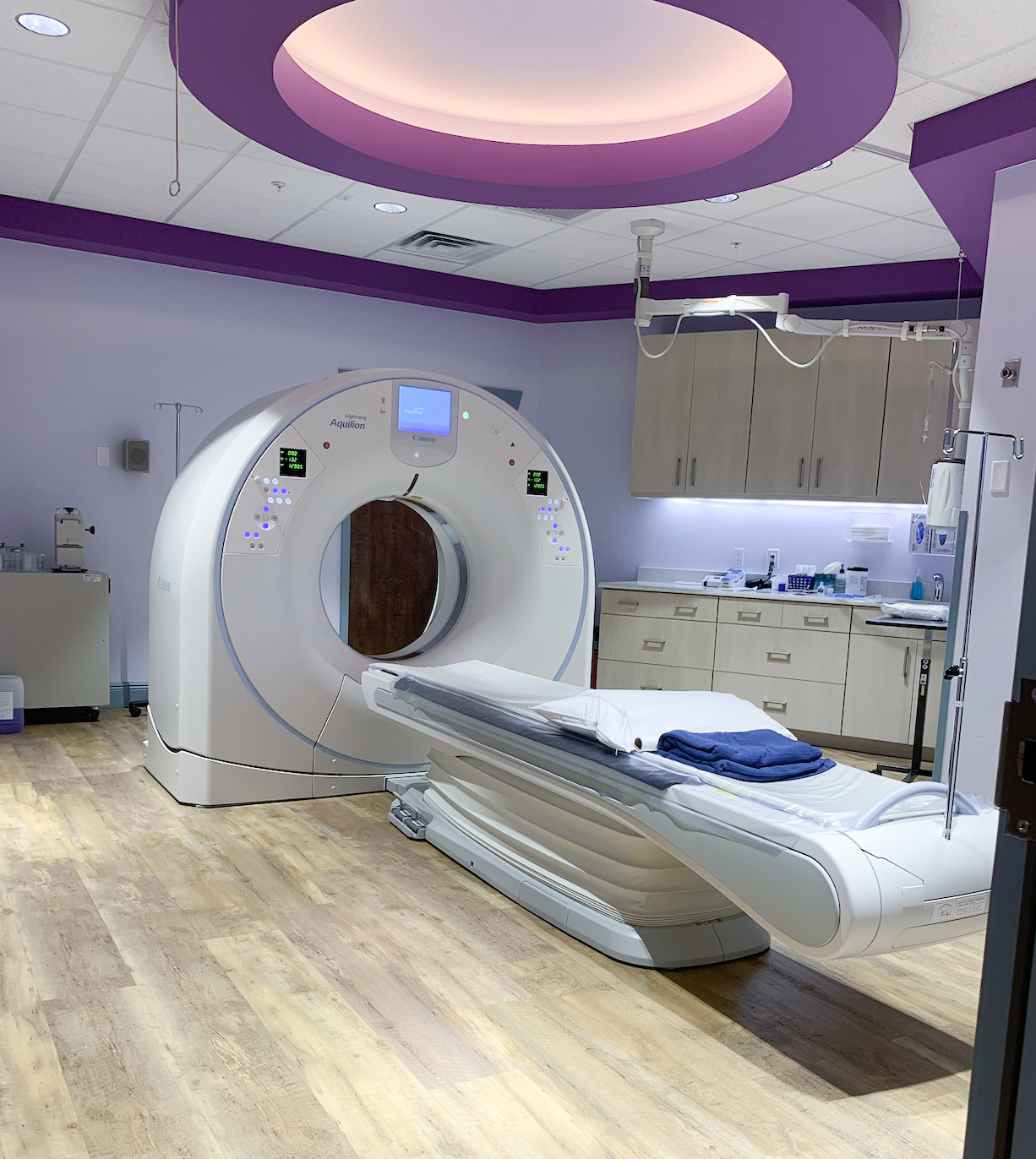What can I expect?
The CT machine looks a bit like a huge donut resting on its side. In the center, there’s a platform for you to lie on while the scan is in progress. While your body is slowly passing through the center ring, the x-ray mechanisms revolve around in different directions to capture visual images. These image “slices” of the examination site are then sent to a computer. There they are combined to form your detailed 3-D image that we will use to form your diagnosis.
Getting a CT scan often requires you to take a contrast material. This just helps to enhance the visibility of certain tissues or blood vessels. The exam itself is fairly quick, and generally takes anywhere from a few minutes to half an hour. You’ll find that the exam is painless and noninvasive. Still, we keep our CT ready with blankets and mood lighting to ensure your comfort.
CAT Scans can tell us so much about what’s going on within the body. It’s for this reason that they are more widely used than other imaging methods such as the x-ray. With CT technology, we can diagnose and treat a wide array of illnesses and injuries. We can use this scan to guide biopsies, plan radiation treatment, and even perform surgeries. CT captures images of even very small bones, soft tissues and blood vessels, making it most doctors’ choice to diagnose and treat spinal problems, injuries to skeletal structures, and vascular diseases. Since it’s so reliable in detecting internal injury and disease, it can also eliminate the need for invasive exploratory surgery.


